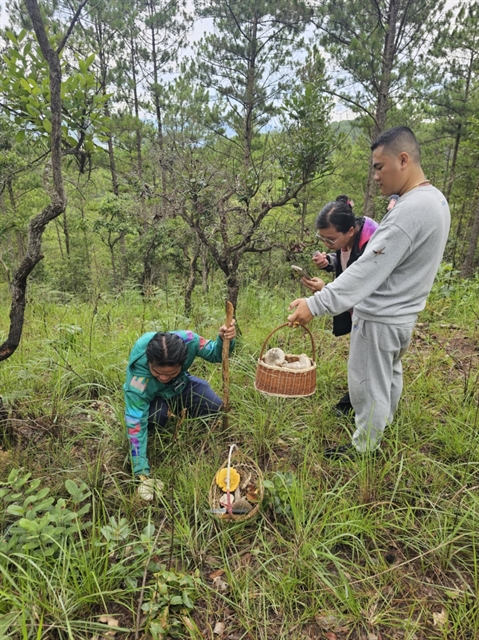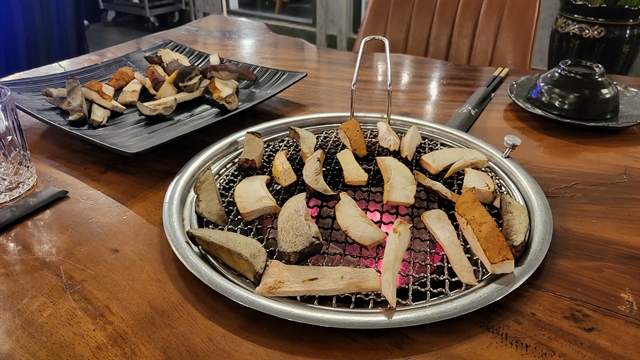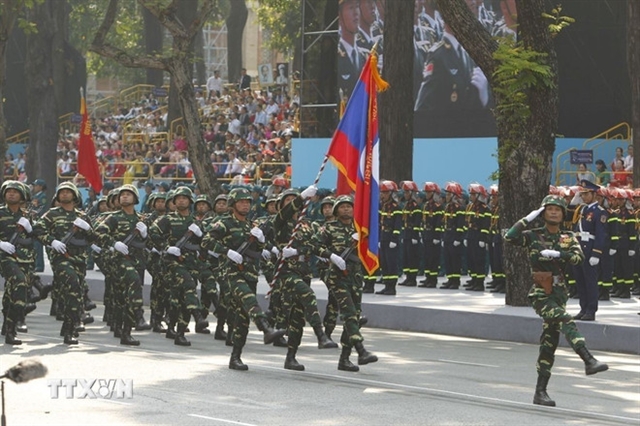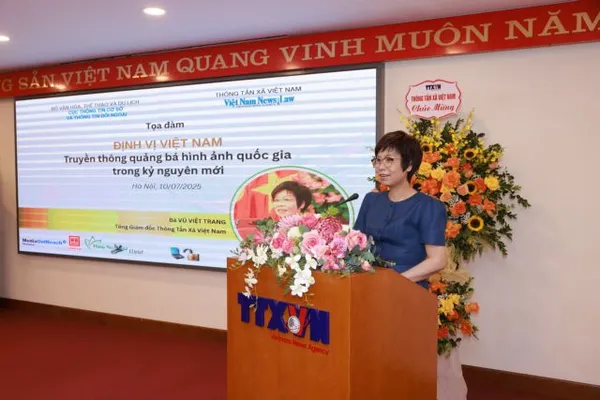 Travel
Travel

 |
| Gan bò mushroom, which belongs to the Boletus genus, a signature type of mushroom in Đà Lạt City in the Central Highland province of Lâm Đồng. — VNS Photo Bảo Hoa |
Bảo Hoa
CENTRAL HIGHLANDS — Visiting Đà Lạt during the rainy season can be a nuisance as your shoes are never dry. But it’s the perfect time to try an activity that is unique to the highlands city and one that is one of the few places in Việt Nam it can be offered: mushroom picking in pine forests.
With more than half of the city’s area covered in forests and increased humidity during this time of the year, Đà Lạt has the ideal conditions for mushrooms to grow abundantly. Mushroom picking has become a popular tourism attraction over the last year.
Mushroom-picking tours are offered by local guides in different packages and rates. A basic tour that consists of mushroom picking and cleaning costs about VNĐ350,000-550,000 (US$13-20), while a more premium package that includes a grilled lunch in the forest can cost up to VNĐ800,000-1 million ($30-38).
A tour often starts from 6.30 or 7am and finishes around noon. Tourists meet their guide at a meeting point in the city centre, then are driven – or drive their own motorbikes – to a forest area, and are guided to identify and pick mushrooms that are safe to eat.
The mushrooms are grilled for lunch with chicken and vegetables, or put into a hotpot. Those who opt for the no-lunch packages can take the mushrooms home.
While the idea of wandering through the pine forests and immersing yourself in nature seems attractive to city people, it’s important to be careful not to pick poisonous mushrooms – a mission for which the tour guide plays a major role.
 |
| The vast pine forests of Đà Lạt create an ideal environment for mushrooms to grow. — VNS Photo Bảo Hoa |
I was glad that my guides, Phương and Ân – a couple based in Đà Lạt – spent years picking mushrooms before it became a trend and know a thing or two about mushroom identification. If you need proof I ate the mushrooms they helped me pick and remained completely fine!
The mushrooms we picked are known by the Vietnamese names of kaki, gan bò (which belong to the Boletus genus), dẻ đỏ, dẻ tím, dẻ xanh (the Russula genus), and mối tro (the Macrolepiota genus) – which are widely known to be safe for consumption.
While Ân is a Đà Lạt local born and bred, she learned the techniques from her husband Phương, who hailed from the southern province of Bình Dương.
“From a young age to adulthood, every now and then I would hear of people dying from mushroom poisoning,” Ân said.
“The press would write about it to warn people, because back then people would pick mushrooms in the forest that looked like those sold in the market and eat them. But they were actually poisonous mushrooms and are toxic,” she added.
“Since we heard so many stories like that, Đà Lạt people are often wary of mushrooms and don’t know which are safe to pick.”
 |
| Mushroom-picking tours are often organised in small groups of four to six people. — Photo courtesy of Nguyễn Phương |
According to Ân, the true mushroom experts would be those that live in Cầu Đất, an area about 22km southeast of Đà Lạt that used to be a tea farm under the French rule in the early 20th century.
“The French saw that there were a lot of mushrooms in the forests, and at that time there was a shortage of food, so they would send those mushrooms back to France to test and see which ones were edible and which ones were not,” she said.
“Then they would hire local people in Cầu Đất to pick the edible ones and so the people down there would be exceptionally good at identifying non-poisonous mushrooms.”
Phương learned to pick mushrooms from a friend in Cầu Đất and has practised it for more than a decade. Observations and taste tests are two main techniques that he and Ân use.
The couple can easily pick up a few kilograms of mushrooms each day during this season. After they have been cleaned and sliced, Ân often mixes kaki with gan bò, and sells them to acquaintances for over VNĐ200,000 ($7.7) per kilogramme.
 |
| Tourists can choose a premium package with a lunch included in the forest, or take the mushrooms to grill at a restaurant. — VNS Photo Bảo Hoa |
The quality of the mushrooms and the short time span that they are available make them a precious commodity, Ân said.
“In the past, people could go into the forests to pick mushrooms in the afternoon, because few people knew and the mushrooms were plentiful. But now if you go in the afternoon, there won't be a lot left,” she said.
People who work in gardens often start picking mushrooms as early as 2am since they have work afterwards, Ân added.
“Because they taste good and are available in only one season a year, over the months of May and June, the mushrooms can be sold at very high prices,” she said. “There won’t be a lot left in July, and if there are, they will be very scattered.”
While mushroom picking is a fun activity for tourists during the rainy season, the unregulated mushroom tour scene poses health risks and calls for stricter management from the authorities, according to Phương.
“The mushroom tour market is pretty chaotic at the moment,” he said. “There are guides with many years of experience, but there are also those that have only gone mushroom picking a few times and now offer tours, which is extremely dangerous.
“I do hope requirements will be put in place for people that want to guide mushroom tours, maybe they should be asked to acquire a certificate before doing it,” he added. — VNS









